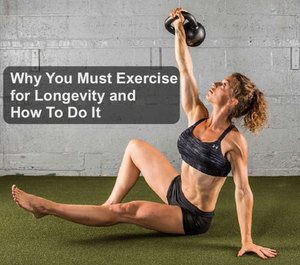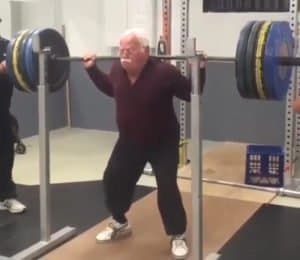Get Strong and Live long with Strength Training

There’s no getting around it — you must engage in strength training to get strong and live long. There’s no point in having a long life if you can’t walk up the stairs or lift yourself off the floor. Learn the science and get inspired by three seniors that are probably older and stronger than you.

I WAS scrolling through my news feed yesterday morning and something made me gasp. Before me was the poster boy for “Get Strong and Live Long” — an image of an 89 year-old man dead lifting 405 pounds (184 kg)!
For those of you unfamiliar with resistance training, it’s highly unlikely that you can do that irrespective of your age or gender.
Speaking of gender, how about an 77 year-old female who can lift 215 pounds (98 kg) off the floor!
I will show you video of both of these extraordinary elders, and an example of great functional fitness and strength obtained by a 72 year-old by mostly performing body weight exercises.
These are exemplary examples of men and women who blast away the customary notion that old age means frailty. They understand how to get strong and live long, and so must you if you’re to avoid the dreaded “sarcopenia”, among other maladies that beset us as we age.
Don’t Let Your Muscles Waste Away

This is Dr. Jeffry Life. Read this about him and testosterone.
You’re wrong if you think frailty is an inevitable result of aging. This is only true if you do nothing about it. Sarcopenia (muscle wasting) happens as we age if don’t stimulate our muscles; a very apt example of the age-old adage:
“Use it or lose it”.
But, you gush, “I don’t care about muscle… I just want to live a healthy, long life!”.
Well, grasshopper, turns out that muscle and healthspan go together. You don’t have to become an adept dead lifter or be able to do ten chin-ups to fight back against sacropenia, but you do have to engage in activities that challenge your muscles.
To get strong and live long you must do strength training. You don’t want to be that person who can’t get up off the floor at 80 years of age.
You Need Muscle To Live Long and Healthy
In his review of a 2007 Study entitled, Resistance Exercise Reverses Aging in Human Skeletal Muscle, Len Kravitz, PhD stated the obvious:
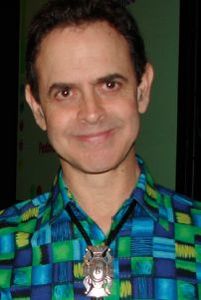
Len Kravitz, PhD
“Human aging is associated with a loss of muscle, deficit in muscular strength, and impairment in performing some activities of daily life.”
Perhaps not as obvious is when in life these deficits begin to show up.
Would you believe, 40?
Yes, typically, we humans begin getting weaker and generally less physically adept starting at age 40 and progress downhill thereafter. As mentioned, medical types have a word for why this happens, “sarcopenia”.
Sarcopenia can be defined as the natural age-related loss of muscle mass, strength and muscle function.
There are several interrelated causes of this muscle aging. Research on the matter suggests they include: oxidative stress (a condition in which antioxidant levels are lower than normal), cell death (apoptosis), chronic inflammation, hormonal dysregulation, inactivity, alternations in protein turnover and mitochondrial (the ATP energy factory in cells) dysfunction. (2)
The 2007 study concluded that resistance training with older people:
- Reduces markers of oxidative stress and increase the anti-oxidant enzyme activity, and
- Effects 179 of the 596 genes associated with age by resetting them to youthful levels.
This means quite literally that the resistance training not only slowed, but also reversed the aging process at the gene level. The gene expressions of the resistance trained older people in the study had attributes similar to those of the younger group.
For instance:
- Mitochondrial impairment, normally seen with inactivity, was reversing within six months of resistance training.
- In muscular strength, the peak isometric strength of the older population was initially 59% lower (weaker) than the younger population. After 26 weeks of training, the older population peak strength was only 38% less than that of the younger group.
Let me repeat one of the startling results of the study:
Gene expression changes associated with aging are reversed to youthful levels after six months of exercise training.
Harvard Health says it succinctly:
“Want to live longer and better? Do strength training.”
The Harvard article goes on to say the usual stuff that you’ve heard before; that regular physical activity promotes general good health, reduces the risk of developing many diseases and helps you live a longer and healthier life.
But, smartly, it makes a distinction between types of exercise that are essential for healthy aging. The image many of us have of “exercise” is walking, jogging, slogging on the treadmill, or other non-weight bearing activities that get the heart pumping.
Overlooked is the value of strength-building exercises.
Once you reach your fifties and beyond, strength (or resistance) training is necessary to keep your capacity to do the most ordinary activities of daily living — and to maintaining an active and independent lifestyle.
Too young to care?
Probably not — the average 30-year-old will lose about a quarter of his or her muscle strength by age 70 and half of it by age 90!
Robert Schreiber, MD, an instructor in medicine at Harvard Medical School says:
Just doing aerobic exercise is not adequate. Unless you are doing strength training, you will become weaker and less functional.
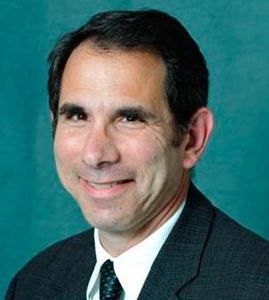
Dr. Robert Schreiber
A study done by the University of Michigan found that having stronger muscles are linked to living longer. Specifically, people with low muscle strength are 50% more likely to die earlier than their stronger peers.
The researchers found that hand grip strength was of particular importance. It’s positively linked to mobility; meaning that the stronger your grip, the more mobile you are.
Grip strength is considered a good reflection of overall strength and is easy to measure using a dynamometer – a person simply squeezes it to measure their strength in pounds or kilograms. Or you can simply put a hand on either side of your bathroom scale and squeeze it as hard as you can.
I wrote about the importance of grip strength in Predict Your Lifespan By These 12 Tests, where I reported: 
“Data analysis of a Prospective Urban Rural Epidemiology study of 139,691 adults aged 35 to 70 showed that every 5 kg (11 pounds) of declining grip strength was associated with a 16% increase in death from any cause, a 17% greater risk of cardiovascular death, and a 17% higher risk of non-cardiovascular mortality.” (3)

Dr. Kate Duchowny
Read: 7 Life-saving Reasons Exercise Is The Ultimate Anti-aging Pill
Get Inspired To Get Strong and Live Long
Now, finally, to those remarkable elderly folks who can move some impressive weight. I show them to you for two reasons:
- To inspire
- To eliminate excuses
First up is 89-year-old Joe Stockinger dead lifting 405 POUNDS (184 kg):
Least you think feats of strength are reserved for elderly men, check out Willie Murphy, a 77-year-old grandma that can dead lift 215 POUNDS (98 kg):
Moving iron ain’t your thing?
It doesn’t need to be. Just moving your own body weight, with perhaps a few add-ons in certain instances, is all that you need.
Watch 72 year-old Lauren Bruzzone do her routine:
These three are impressive, yes?
So, are you now gonna just click to some other fanciful thing on the Interwebs and forget all about this, or investigate a bit more what you can do to keep up (or build) some lean muscle?
Keep reading…
The Get Strong and Live Long Mindset
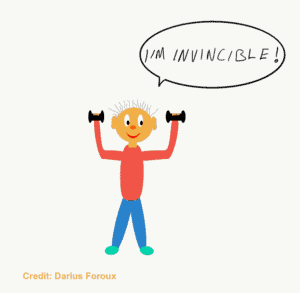
A beginner’s strength-building workout takes as little as 20 minutes. Grunting, straining and even sweating like a horse is optional.
The key is developing a well-rounded program, performing the exercises with good form, and being consistent.
You will experience noticeable gains in strength within four to eight weeks.
To get started, do one or more of the following:
- Grab a like-minded buddy (preferably one a bit more knowledgeable than you in this area) and support each other’s efforts.
- Work with a trainer, one is good at evaluating where you’re at and how to get you to the promised land.
Before hiring a trainer:
(1) Watch how he/she trains others. Make sure that there’s an emphasis on form and tempo (how fast the movement is done).
(2) Make sure one emphases is on compound exercises. Begin with movements that engage two or more large muscles simultaneously, like squats, dips and dead lifts. Only do isolation exercises like bicep curls and triceps extensions if you have the time and energy after the compound movements are done.
(3) Make sure the other emphases is on mobility. You want to work on articulating all of your joints in their full range of motion. As we age, our shoulders, hips and knees tend to become compromised in their range of motion, particularly under load (your body weight).
However you start, go slow, park your ego before you enter the gym and pay more attention to form than how much you lift.
If you have any health issues, discuss your new exercise plan with your doctor and explain the level of workout you expect to do. Mild to moderate muscle soreness between workouts is normal, but back off if it persists more than a few days and work on mobility instead until you recover.
I have many articles on this site about how to exercise.
Start with these:
3 Expert-approved Anti-aging Exercise Routines You Can Do and Why You Should Bother
Your “Get Strong and Live long” Takeaway
Remember these five things:
- Strength exercise that builds and/or maintains lean body mass is the most effective longevity “pill” now available to you.
- To live a healthy, long life you need muscle and strength
- Muscle and strength actually activates genes responsible for longevity
- Recruit a like-minded buddy and design a muscle-building strength program.
- Hire a trainer if needed, but make sure that he/she is qualified to lead you to the promised land.
Last Updated on February 19, 2021 by Joe Garma

